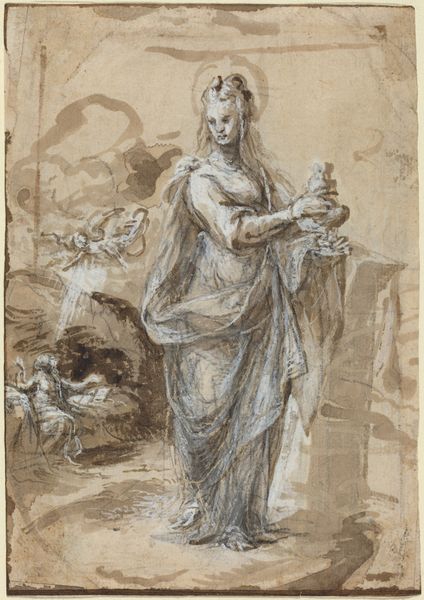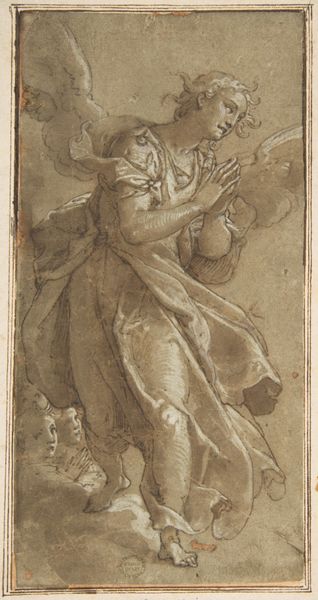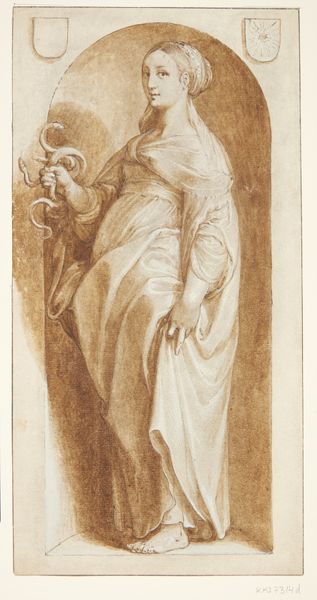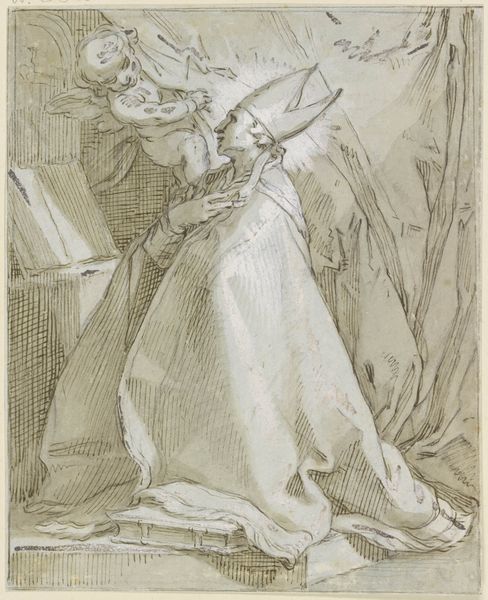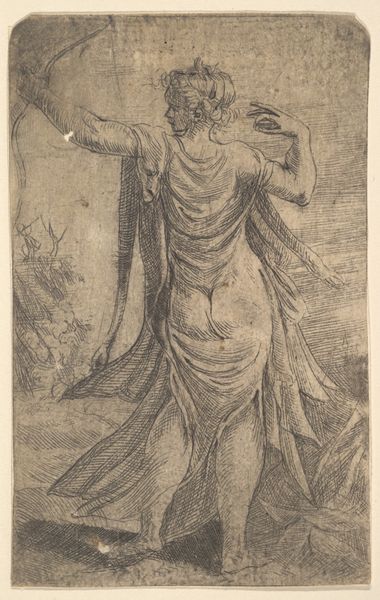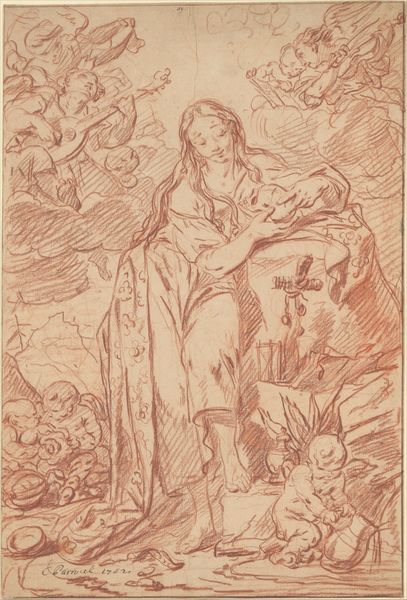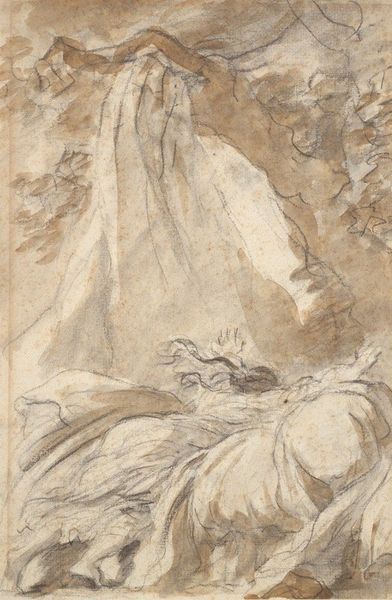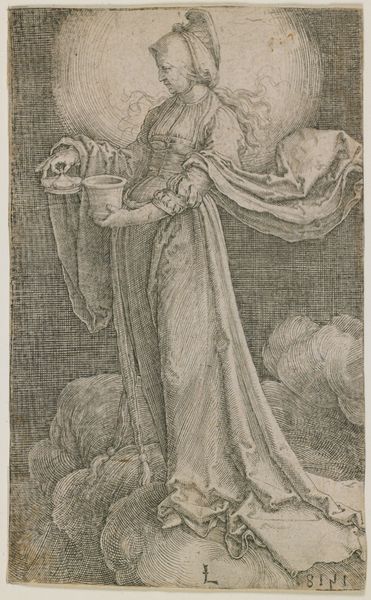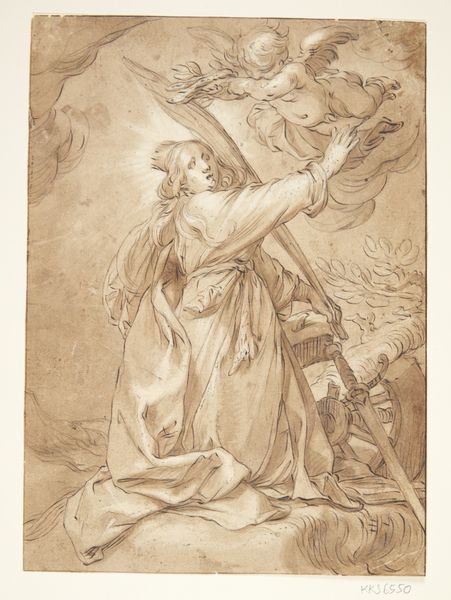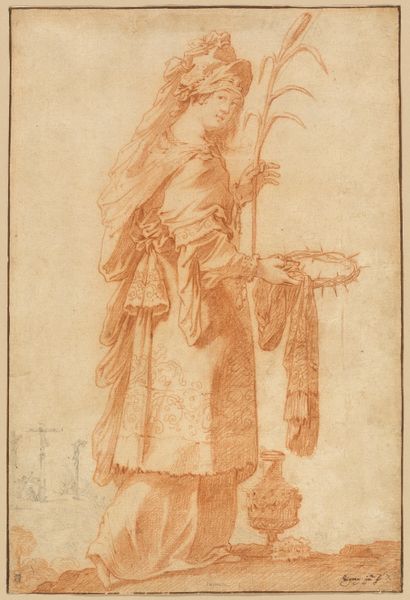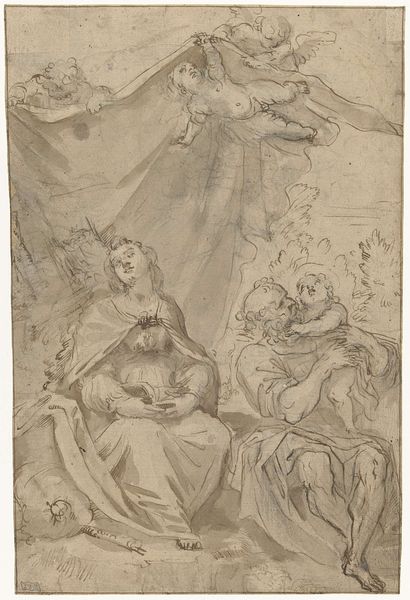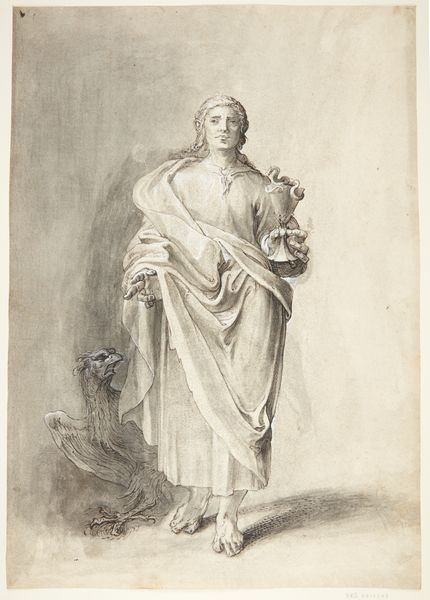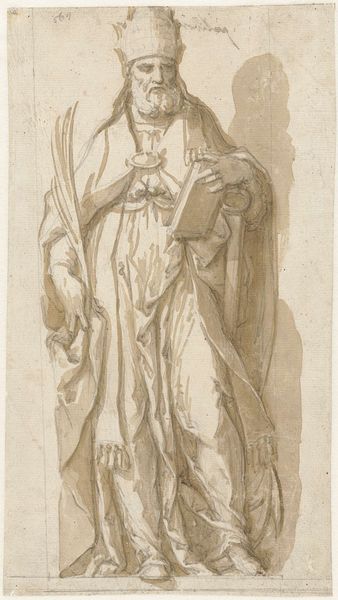![Mary Magdalene [verso] by Biagio Pupini](/_next/image?url=https%3A%2F%2Fd2w8kbdekdi1gv.cloudfront.net%2FeyJidWNrZXQiOiAiYXJ0ZXJhLWltYWdlcy1idWNrZXQiLCAia2V5IjogImFydHdvcmtzLzYzNDQ0ODU2LWViY2QtNGExMC1hZDhlLTZiNWQxY2ZmMmFjOS82MzQ0NDg1Ni1lYmNkLTRhMTAtYWQ4ZS02YjVkMWNmZjJhYzlfZnVsbC5qcGciLCAiZWRpdHMiOiB7InJlc2l6ZSI6IHsid2lkdGgiOiAxOTIwLCAiaGVpZ2h0IjogMTkyMCwgImZpdCI6ICJpbnNpZGUifX19&w=3840&q=75)
drawing, paper, ink
#
portrait
#
drawing
#
charcoal drawing
#
figuration
#
paper
#
ink
#
portrait drawing
#
italian-renaissance
Dimensions: overall: 16.5 x 11.6 cm (6 1/2 x 4 9/16 in.)
Copyright: National Gallery of Art: CC0 1.0
Curator: This is Biagio Pupini's "Mary Magdalene," dating from after 1524. The medium here is primarily ink and charcoal drawing on paper. Editor: The dynamism of this drawing is arresting; it is a whirlwind of dark, gestural marks, especially surrounding the figure on the right and contrasts to the serene face and careful drapery of the Magdalen herself. Curator: Yes, the implied movement is fascinating when you consider Magdalene's role in the evolving religious and social landscape of the time. She represented repentance and redemption, powerful ideas gaining traction amidst reformation debates. Editor: Absolutely, and formally, consider how the light illuminates Magdalene’s face. Notice how the artist used soft, nuanced hatching techniques that seem to contrast sharply with the turbulent background shapes. Is it intentional, or did the artist execute those different areas at different times? Curator: Knowing the context, it seems very deliberate. Magdalene’s steady pose holding the ointment jar reflects the Church’s resilience amid reformative social disruption and shifting views about the Bible, forgiveness, and feminine roles within Catholicism. The jar itself functions like a miniature altar of self-sacrifice, quite literally. Editor: I’m curious about the quick notations, possibly landscape sketches, and the rapidly drawn, slightly disturbing winged insect. Its angularity creates such interesting negative spaces which further add tension! The stark contrast to the foregrounded religious icon practically begs for interpretation. Curator: The juxtaposition likely aimed to trigger contemplation on mortality, spiritual decay and corruption in broader society. Representations like these functioned in the 16th century much like provocative media does today—they stirred religious and political fervor! Editor: What do you think of the column to her left? How does its sharp-edged geometry juxtapose to her organic form and clothing and impact how we receive the foreground? Curator: That fluted column may serve to associate Mary Magdalene with civic authority or classical ideals. Her quiet composure almost asserts feminine virtue or an alternate leadership paradigm set apart from increasingly challenged Church doctrines. It’s a compelling blend of spirituality and subtle social commentary, don't you agree? Editor: A wonderful visual synthesis for our visitors to explore and understand in their own way. Thank you.
Comments
No comments
Be the first to comment and join the conversation on the ultimate creative platform.
